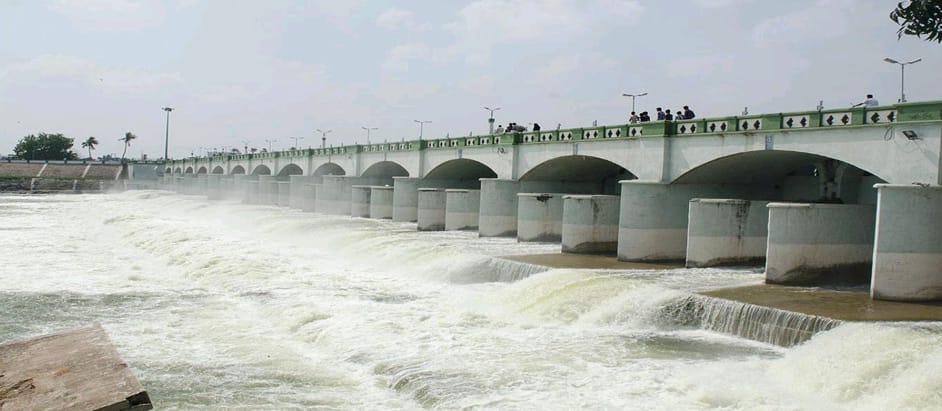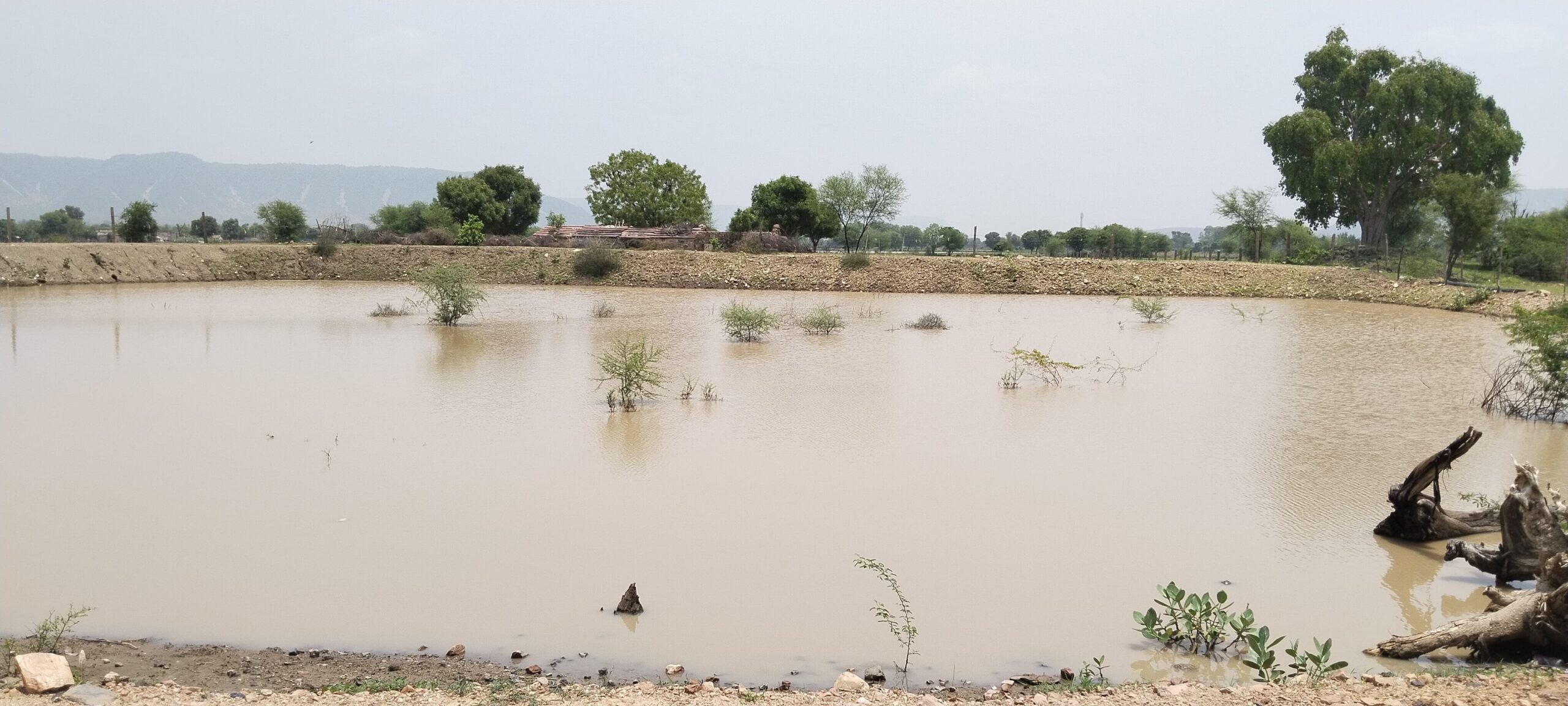The name of Uttar Pradesh conjures up many images- perhaps of the Taj Mahal, sugarcane fields, or the stupas at Sarnath. However, UP is almost synonymous with the river Ganga. Ganga, which has more than half of its total stretch by length in UP has undoubtedly shaped its inhabitants’ relationship with water. On the other hand, agriculture, being the major economic force in the state has also left its touch on UP’s water resources. The story of water management in Uttar Pradesh is thus linked very strongly with rivers and with agriculture.
With over 241 million people (16.7% of India’s population) and 7.33% of the country’s land area, it is the most populous and fourth largest state of India. It has around 20.80% of India’s renewable water resources.[1] It has very substantial surface water sources. Major rivers in the state include Ganga, Yamuna, Ghaghra, Gomti, Gandak and Son. The state also has high annual groundwater recharge of over 0.2 m and normally receives average rainfall of 844.1 mm annually.[2]

River Basins in Uttar Pradesh| Map created by State Water Resources Agency, UP, 2020
Agriculture is the lifeline of the state, with it being the livelihood of about 78% of people in the state.[3] Irrigation is the principal consumer of water in the state. It consumes about 43.8 BCM of surface water and about 48.5 BCM of groundwater of the total of about 161.64 BCM of surface water and about 65.31 BCM exploitable ground water resources of the state. The surface water utilisation will go up with new projects coming up in UP. [1] It is no wonder then that Uttar Pradesh, like most of the other parts of the country, suffers with the water stress. It is also no wonder that Uttar Pradesh, like any other region of the country has a rich history of innovative irrigation and rainwater harvesting techniques.
Haveli System
The Haveli system is a unique rainwater conservation system practiced in parts of Uttar Pradesh and neighbouring Madhya Pradesh. It involves the construction of earthen embankments around a farm field and impounding rainwater in the fields during monsoon and draining the water in the post-monsoon season. It has been modified and innovated upon to include masonry walls and spillways. Studies have found evidence to show that the Haveli system contributes to rehabilitation of degraded landscapes and increases their productivity. The system also serves to enhance household income and improve groundwater levels in dug wells.[4] Further, researchers have found that the Haveli system can significantly help in carbon capture and in improving biological fertility of soil.[5]

Construction of masonry core wall and spillway (top left); Harvested rainwater in haveli structure during monsoon (top right); draining out water from haveli before post-monsoon crop (bottom left); wheat cultivated on haveli bed during post-monsoon season (bottom right) | Credit: Singh R, Akuraju V, Anantha KH, Garg KK, Barron J, Whitbread AM, Dev I and Dixit S (2022) [4]
Pokhar
Apart from this unique irrigation practice, Uttar Pradesh, like many other states, also has a tradition of rainwater harvesting in the form of ponds. They are known by different names like talab, bandhi and pokhar. These are popular in the Jhansi and Mirzapur uplands of UP. These ponds are used for domestic or irrigation purposes. Sometimes, after the ponds dry in post-monsoon season, crops are grown on the pond bed.[7]

Nawab Talaab in Kairana, Uttar Pradesh
Taanka
Taankas are usually underground covered tanks built to capture rainwater. Inspired by the taankas of Rajasthan, Uttar Pradesh has implemented taankas to store rainwater and use it for agricultural and household purposes. Sonbhadra, in particular, built over 5,000 underground rainwater storage tanks and an equal number of ponds.[6] These provide a crucial and sustainable water resource during dry seasons.

Traditional Taanka
Some Water Heritage Sites in UP
Because of these traditional water management methods spanning centuries and even millennia, many water linked historical sites are found in the state of UP. For example, an ancient tank to store the Ganga floodwater, dating back to 1st Century CE was found in Sringaverapura in Prayagraj, Uttar Pradesh.[8] Other water heritage sites include:

Baruasagar is an artificial lake built by the Bundela Raja Udit Singh of Orchha between 1705 and 1707 CE.[9]

Shukla Talaab: This pond was built by Sheetal Shukla, an official of Nawab Almas Ali Khan of Jehanabad.[10]
The Way Forward
Despite its lofty water resources, the stage of groundwater extraction in UP is 70.54% which is considered semi-critical.[2] Further, the rivers of UP are struggling with very high levels of pollution and large stretches are devoid of flows to support aquatic ecology. Many large parts of UP have become water stressed.[1]
These traditional water harvesting methods have the potential to reduce stress on groundwater resources and rivers and let them recover from high levels of pollution. These techniques which involve storage of rainwater can prevent polluted runoff from mixing into rivers as well. They also contribute to creating overall healthy eco-systems, help mitigate the effects of droughts and floods and can be part of the strategy to combat climate change. However, their practice has declined due to apathy and changing weather patterns.[4]
We need to push for their revival as these techniques are often sustainable, cost-effective, and eco-friendly solutions to many pressing problems related to water. This should be accompanied by scientific research, documentation, engaging stakeholders and spreading awareness about these issues.
- UP State Water Policy Draft, 2020, https://www.nitiforstates.gov.in/public-assets/Policy/policy_files/PSSNAE000086.pdf
- National Compilation on Dynamic Ground Water Resources of India, 2024, CGWB: https://cgwb.gov.in/cgwbpnm/public/uploads/documents/17357182991031590738file.pdf
- India Water Resource Information System, Page on Uttar Pradesh: https://indiawris.gov.in/wiki/doku.php?id=uttar_pradesh
- Singh R, Akuraju V, Anantha KH, Garg KK, Barron J, Whitbread AM, Dev I and Dixit S (2022) Traditional Rainwater Management (Haveli cultivation) for Building System Level Resilience in a Fragile Ecosystem of Bundelkhand Region, Central India. Front. Sustain. Food Syst. 6:826722. doi: 10.3389/fsufs.2022.826722
- R.K. Sahu, A.K. Rawat, D.L.N. Rao, Traditional rainwater management system (‘Haveli’) in Vertisols of central India improves carbon sequestration and biological soil fertility, Agriculture, Ecosystems & Environment, Volume 200, 2015, Pages 94-101, ISSN 0167-8809, https://doi.org/10.1016/j.agee.2014.11.005
- NITI for States: Tanks in UP, https://www.nitiforstates.gov.in/best-practice-detail?id=100052
- Rainwater Harvesting and Artificial Recharge, CGWB, Ministry of Water, New Delhi, 2011: https://cgwb.gov.in/cgwbpnm/public/uploads/documents/1686136871443876411file.pdf
- Reviving traditional rain-water harvesting system and artificial groundwater recharge, NIRBAN LASKAR, Sadhana (2022), Indian Academy of Sciences, https://doi.org/10.1007/s12046-022-02035-6
- District Jhansi Tourism: https://jhansi.nic.in/hi/tourist-place/%E0%A4%AC%E0%A4%B0%E0%A5%81%E0%A4%86%E0%A4%B8%E0%A4%BE%E0%A4%97%E0%A4%B0/
- Kanpur Dehat: History, https://kanpurdehat.nic.in/history/
- Picture Credits: Nawab Talaab- Wikimedia Commons, Author: Umarkairanvi, Taanka- Wikimedia Commons, Author: Spiritualfade, Barua Sagar- District Jhansi Tourism: https://jhansi.nic.in/hi/tourist-place/%E0%A4%AC%E0%A4%B0%E0%A5%81%E0%A4%86%E0%A4%B8%E0%A4%BE%E0%A4%97%E0%A4%B0/, Shukla Talab- Wikimedia Commons, Author: Ngodara
- Creative Commons Information: https://creativecommons.org/licenses/by-sa/3.0/deed.en * Cover Picture: Lotus cultivation along with other crops in a low lying area in Siddharth Nagar, UP. The area is close to Nepal Border.








Leave a Reply